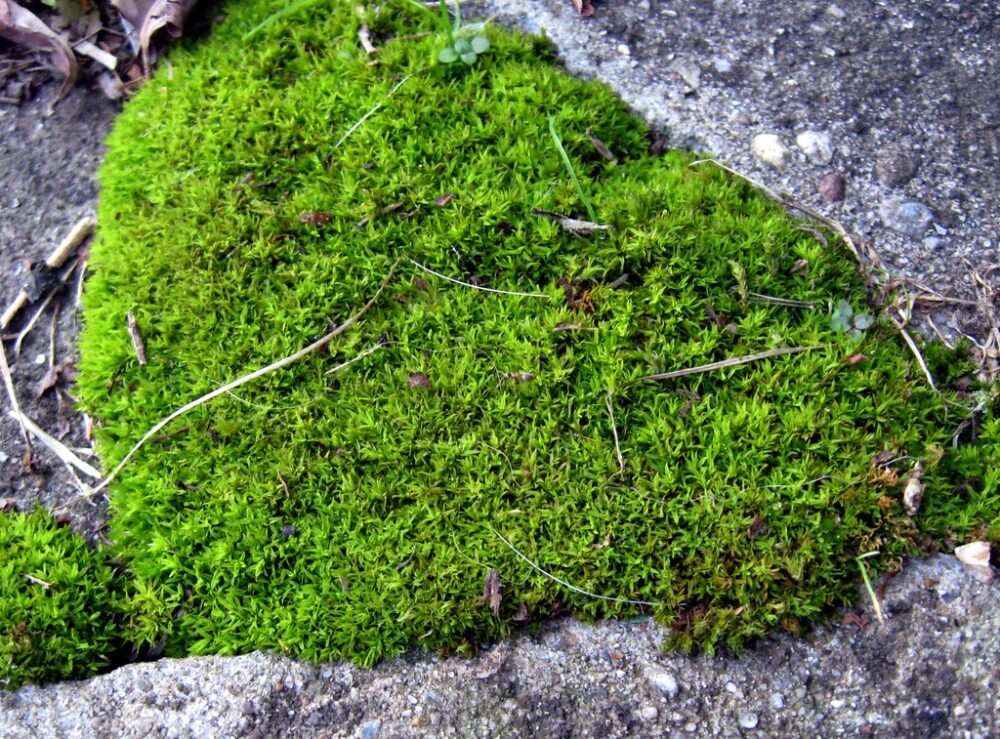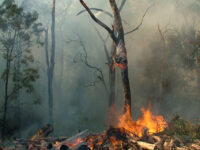On the harsh, icy cliffs of the Tibetan Plateau, an ancient moss carpets the ground. Covered by snow for eight months of the year, Takakia is a highly specialized moss and one of the fastest-evolving plants ever documented. Surviving four mass extinctions, this 390-million-year-old moss species saw the rise and fall of dinosaurs and the formation of the Himalayas. Yet, as this moss population continues to decline in the face of warming conditions, even its speedy adaptation rate may not be sufficient to save one of the world’s oldest extant plants from the threats posed by a changing climate.
The genus Takakia consists of two species, Takakia lepidozioides and Takakia ceratophylla, which exist together only in the Tibetan Plateau. Takakia possesses unique characteristics that differentiate it from other mosses, both phenotypically and genetically. For many years, Takakia’s evolutionary history appeared ambiguous; researchers were uncertain if the genus was more closely related to algae or to other early nonvascular plants called liverworts. A study published earlier this year reports the sequenced genome of T. lepidozioides, providing genetic confirmation of previous research that Takakia is indeed a moss.
Along with the newly sequenced genome, the report documents a decade’s worth of field observations for a Takakia population living 4,000 meters above sea level in the Tibetan Plateau’s southern corner. From 2010 to 2021, the research team recorded information on the plants and their surrounding ecosystems at 68 sample sites. To examine the trajectory of Takakia’s evolution, the researchers analyzed this genomic and observational data, assisted by the oldest Takakia fossil from 165 million years ago. Outwardly, the moss has not changed much, retaining its ancient body plan. Inwardly, however, Takakia’s genetics have evolved drastically. With 121 fast-evolving genes, several of which are adaptations to the Tibetan Plateau’s extreme conditions, the moss holds the record for the greatest number of fast-evolving genes recorded in a plant.
“With 121 fast-evolving genes, several of which are adaptations to the Tibetan Plateau’s extreme conditions, the moss holds the record for the greatest number of fast-evolving genes recorded in a plant”
This rapid evolution was essential to Takakia’s survival as the Himalayas began to uplift 65 million years ago. As the mountains rose, the moss’s environment dramatically shifted to more extreme conditions. Higher elevations caused a sharp increase in harmful UV-B radiation, a sudden drop in temperature, and a longer period of snow cover. Takakia proved its resilience; the moss adapted to repair damaged DNA, produce more lipids that help absorb dangerous UV-B rays, and develop enhanced freezing tolerance.
Despite its historical ability to withstand momentous environmental transformations, the moss is now under threat from climate change. In 2000, the International Union for Conservation of Nature’s Red List of Threatened Species categorized T. ceratophylla as globally vulnerable due to the declining area and quality of its small, fragmented habitat. From 2010 to 2021, Takakia coverage decreased by 1.6% annually, faster than four common mosses on the plateau. This population decline corresponded with a temperature increase of 0.43 degrees Celsius per year during the same period, the most drastic documented increase at this high altitude.
Takakia is the result of millions of years of adaptive evolution to the Tibetan Plateau’s unique set of environmental conditions. Unfortunately, this high specialization now presents a greater risk of extinction when rapid climate-driven habitat alterations occur. This is not a problem unique to Takakia. Across numerous phyla, populations of specialist species are declining due to disturbances caused by human activity and are being replaced by generalists. In contrast to specialists, generalist species possess a broad niche, meaning they can thrive in a wide range of habitats with a variety of environmental conditions and resources. As habitats quickly shift from their historic states, specialists suffer with no time to adapt, allowing generalists to outperform them.
Some scientists are concerned that this replacement of specialists by generalists may lead to a functional homogenization of communities, which could alter and harm essential ecosystem functions and services. Functional homogenization refers to the decrease in a community’s functional diversity, meaning that an increasing number of species fill similar niches while fewer species supply a variety of roles. Generalists typically do not fill highly specific functions or do so less efficiently than specialists. Therefore, the loss of specialists can impact the overall functioning of an ecosystem and decrease the community’s resilience to future change.
“The fate of the Takakia population serves as a warning for the dangers of global climate change.”
The research team plans to sequence more Takakia genomes to gain further insight into the history of the moss’s evolution, along with its population dynamics and genetic diversity. The fate of the Takakia population serves as a warning for the dangers of global climate change. As temperatures continue to climb, it is possible that the Tibetan Plateau will lose this ancient and rare moss.






